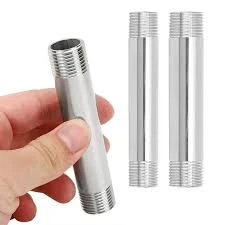-
Cangzhou Yulong Steel Co., Ltd.
-
Phone:
+86 13303177267 -
Email:
admin@ylsteelfittings.com
- English
- Arabic
- Italian
- Spanish
- Portuguese
- German
- kazakh
- Persian
- Greek
- French
- Russian
- Polish
- Thai
- Indonesian
- Vietnamese
- Zulu
- Korean
- Uzbek
- Hindi
- Serbian
- Malay
- Ukrainian
- Gujarati
- Haitian Creole
- hausa
- hawaiian
- Hebrew
- Miao
- Hungarian
- Icelandic
- igbo
- irish
- Japanese
- Javanese
- Kannada
- Khmer
- Rwandese
- Afrikaans
- Albanian
- Amharic
- Armenian
- Azerbaijani
- Basque
- Belarusian
- Bengali
- Bosnian
- Bulgarian
- Catalan
- Cebuano
- China
- China (Taiwan)
- Corsican
- Croatian
- Czech
- Danish
- Esperanto
- Estonian
- Finnish
- Frisian
- Galician
- Georgian
- Kurdish
- Kyrgyz
- Lao
- Latin
- Latvian
- Lithuanian
- Luxembourgish
- Macedonian
- Malgashi
- Malayalam
- Maltese
- Maori
- Marathi
- Mongolian
- Myanmar
- Nepali
- Norwegian
- Norwegian
- Occitan
- Pashto
- Dutch
- Punjabi
- Romanian
- Samoan
- Scottish Gaelic
- Sesotho
- Shona
- Sindhi
- Sinhala
- Slovak
- Slovenian
- Somali
- Sundanese
- Swahili
- Swedish
- Tagalog
- Tajik
- Tamil
- Tatar
- Telugu
- Turkish
- Turkmen
- Urdu
- Uighur
- Welsh
- Bantu
- Yiddish
- Yoruba

Nov . 09, 2024 08:20 Back to list
Understanding Class 150 Slip-On Flanges for Various Industrial Applications
Understanding Slip-On Flanges Class 150 A Comprehensive Overview
In the world of piping systems, flanges play a crucial role in ensuring the integrity and functionality of various applications. Among the myriad types of flanges available, the slip-on flange, particularly the Class 150 variant, stands out for its versatility and ease of installation. This article aims to provide a comprehensive understanding of slip-on flanges, their specifications, benefits, and common applications.
What are Slip-On Flanges?
Slip-on flanges are designed to slide over the end of a pipe, allowing for easy installation and alignment. They are typically used for joining two sections of piping or for connecting pipes to equipment such as valves and pumps. The design of slip-on flanges facilitates quick assembly, making them a popular choice in various industrial applications.
Class Rating Explained
The classification of flanges, such as Class 150, denotes the pressure-temperature rating of the flange. In the case of Class 150 flanges, these have a pressure rating of 150 psi (pounds per square inch) at a temperature of up to 100°F (37.8°C). The rating changes with temperature; hence, it's crucial to refer to the appropriate pressure-temperature chart to ensure safety and efficacy in any application. Class 150 flanges are commonly used in moderate pressure applications, typically found in water, oil, and gas industries.
Material Considerations
Slip-on flanges can be manufactured from various materials, with carbon steel, stainless steel, and alloy steels being the most common. The choice of material significantly affects the flange's performance and compatibility with different media. For example, stainless steel flanges offer high corrosion resistance, making them suitable for chemical processing applications. Conversely, carbon steel flanges are often more economical and can handle high pressures.
slip on flanges class 150

Installation and Maintenance Benefits
One of the primary advantages of slip-on flanges is their ease of installation. Unlike welded flanges, which require extensive preparation and specialized skills, slip-on flanges can be installed with basic tools and minimal labor. This results in reduced installation costs and time. Additionally, slip-on flanges allow for some misalignment, which can be beneficial in systems where precise alignment is challenging.
Maintaining slip-on flanges is relatively straightforward. Regular inspections can identify any signs of wear, corrosion, or sealing issues. The use of gaskets is essential to prevent leaks, and as long as the flange faces are adequately cleaned and maintained, they can provide a reliable sealing solution.
Applications of Class 150 Slip-On Flanges
Class 150 slip-on flanges are used across various industries. They are prevalent in water treatment facilities, where they can connect piping systems and valves, ensuring efficient fluid transport. In the oil and gas sector, these flanges can be found in refineries and pipelines, facilitating easy modifications and maintenance. Additionally, the chemical industry relies on these flanges for safe and efficient processing of various substances.
Conclusion
In conclusion, slip-on flanges, specifically Class 150 variants, offer a balance of ease of installation, moderate pressure capabilities, and a variety of material options. Their application across numerous industries underscores their versatility and reliability. Whether for new installations or upgrades in existing systems, slip-on flanges remain a staple in effective piping solutions. Understanding their characteristics and proper maintenance can significantly enhance the longevity and performance of piping systems, ensuring safety and efficiency in operations.
Latest news
-
ANSI 150P SS304 SO FLANGE
NewsFeb.14,2025
-
ASTM A333GR6 STEEL PIPE
NewsJan.20,2025
-
ANSI B16.5 WELDING NECK FLANGE
NewsJan.15,2026
-
ANSI B16.5 SLIP-ON FLANGE
NewsApr.19,2024
-
SABS 1123 FLANGE
NewsJan.15,2025
-
DIN86044 PLATE FLANGE
NewsApr.19,2024
-
DIN2527 BLIND FLANGE
NewsApr.12,2024
-
JIS B2311 Butt-Welding Fittings LR/SR 45°/90° /180°Seamless/Weld
NewsApr.23,2024











